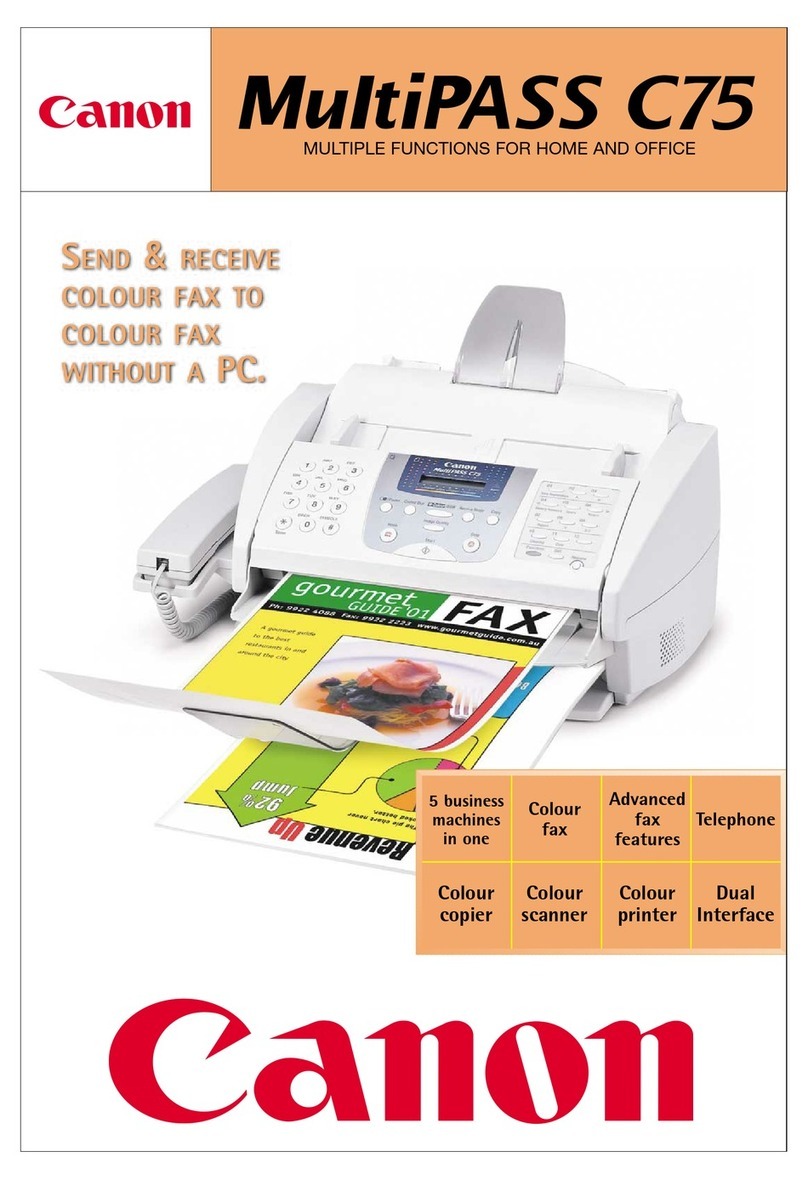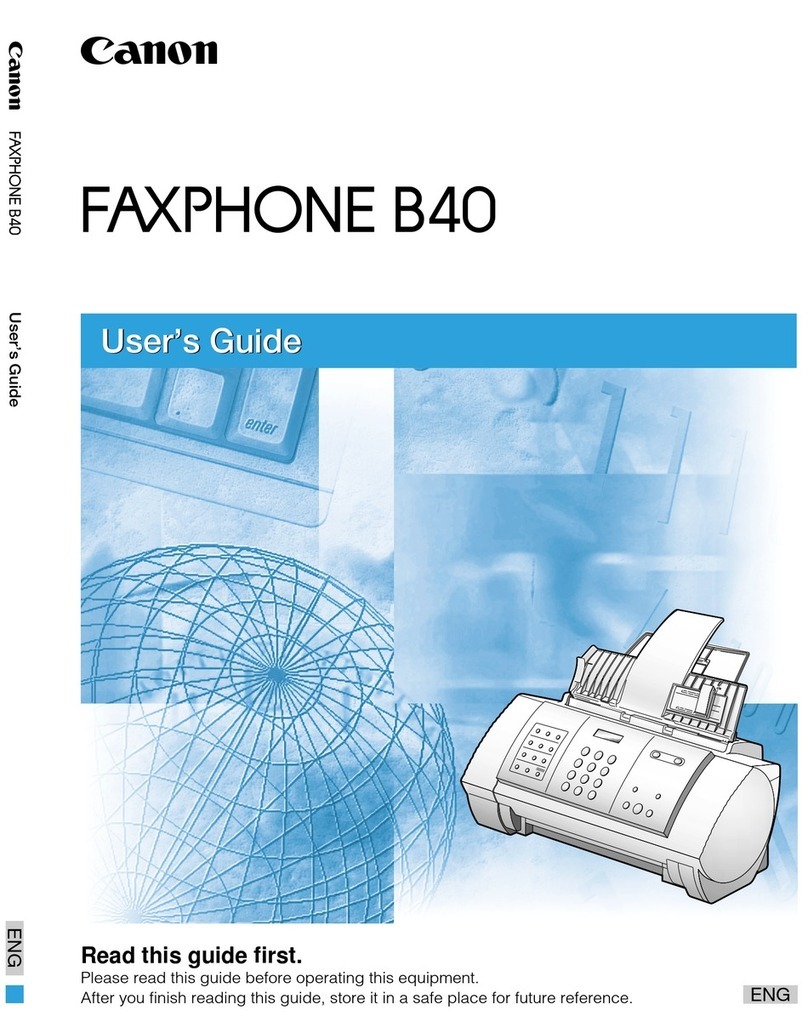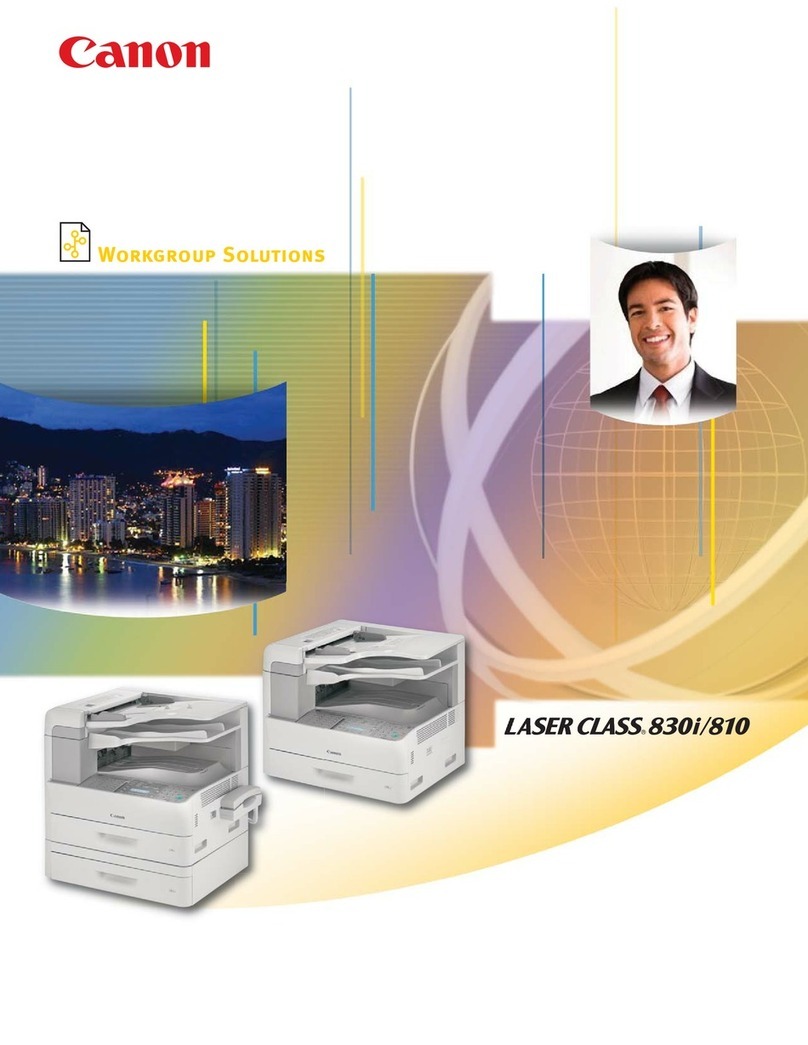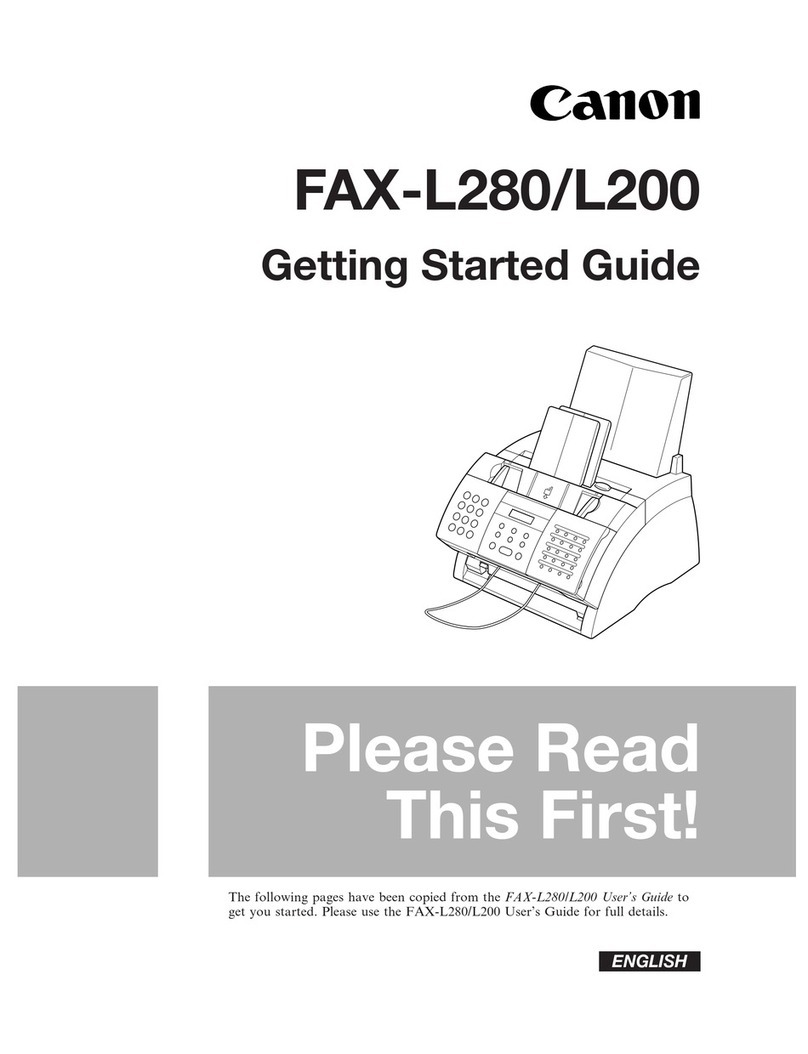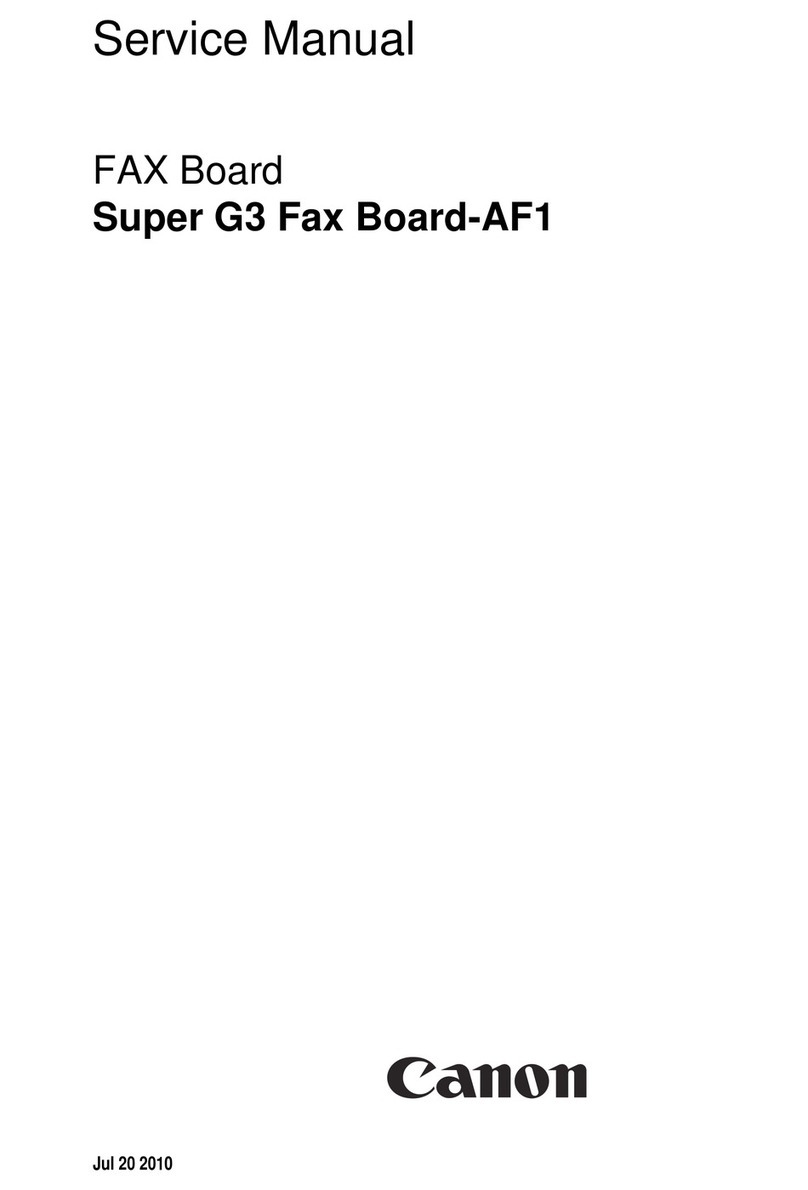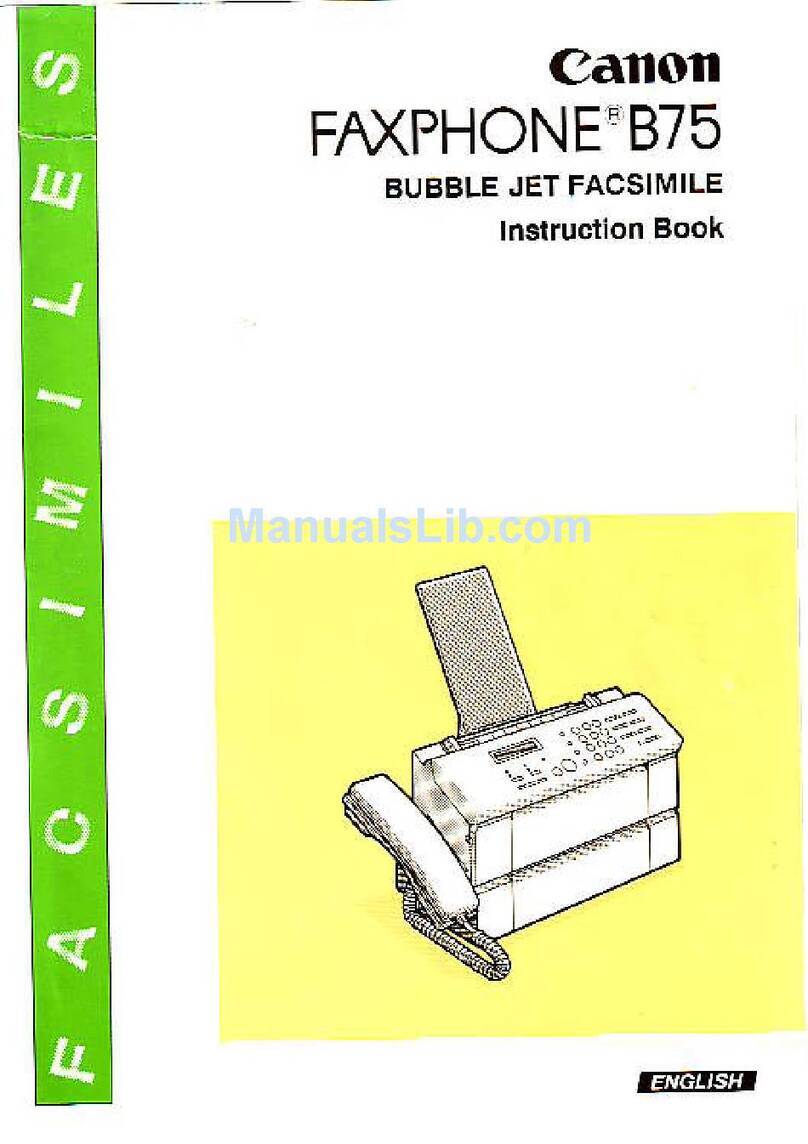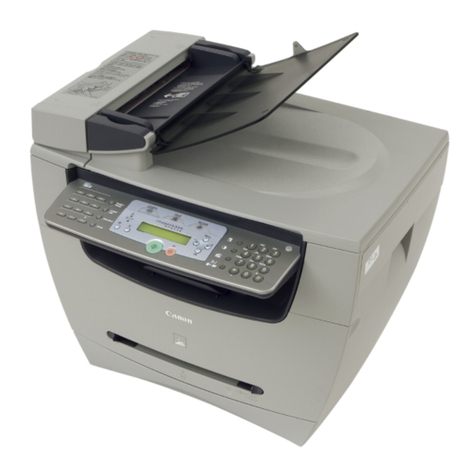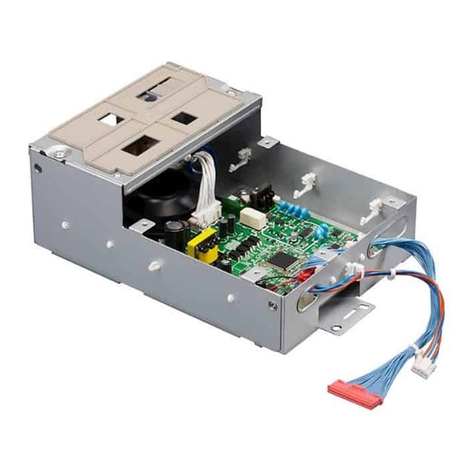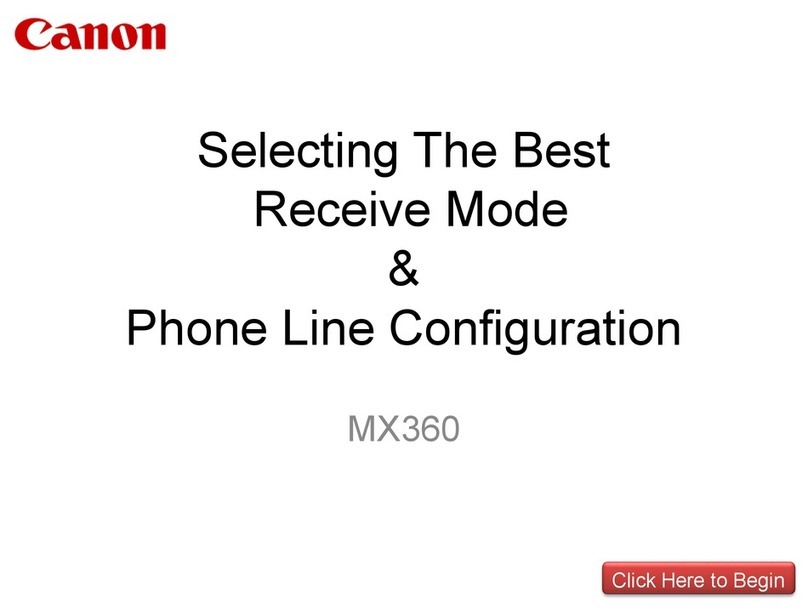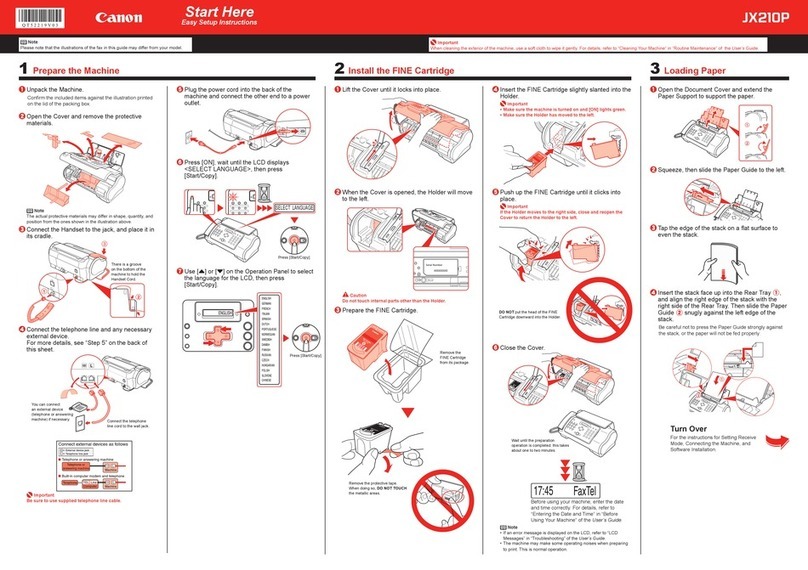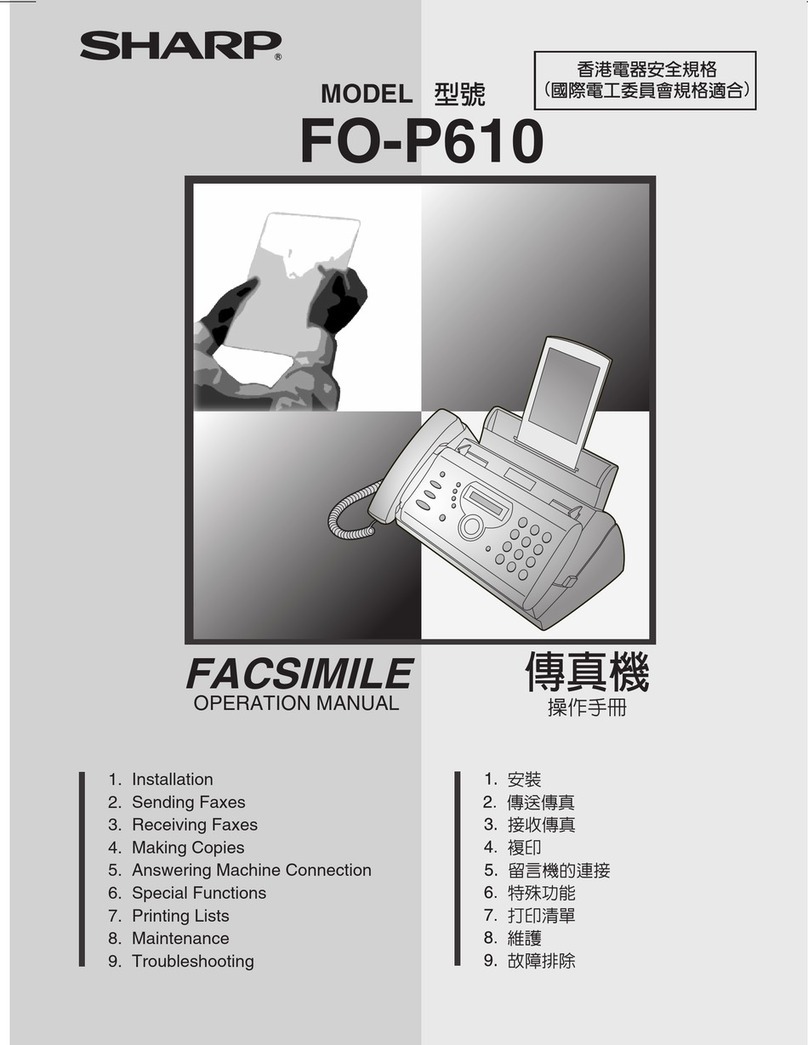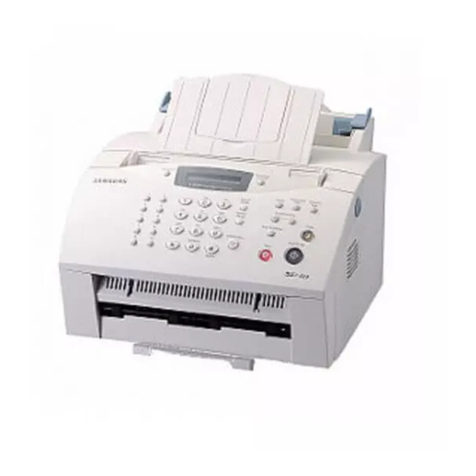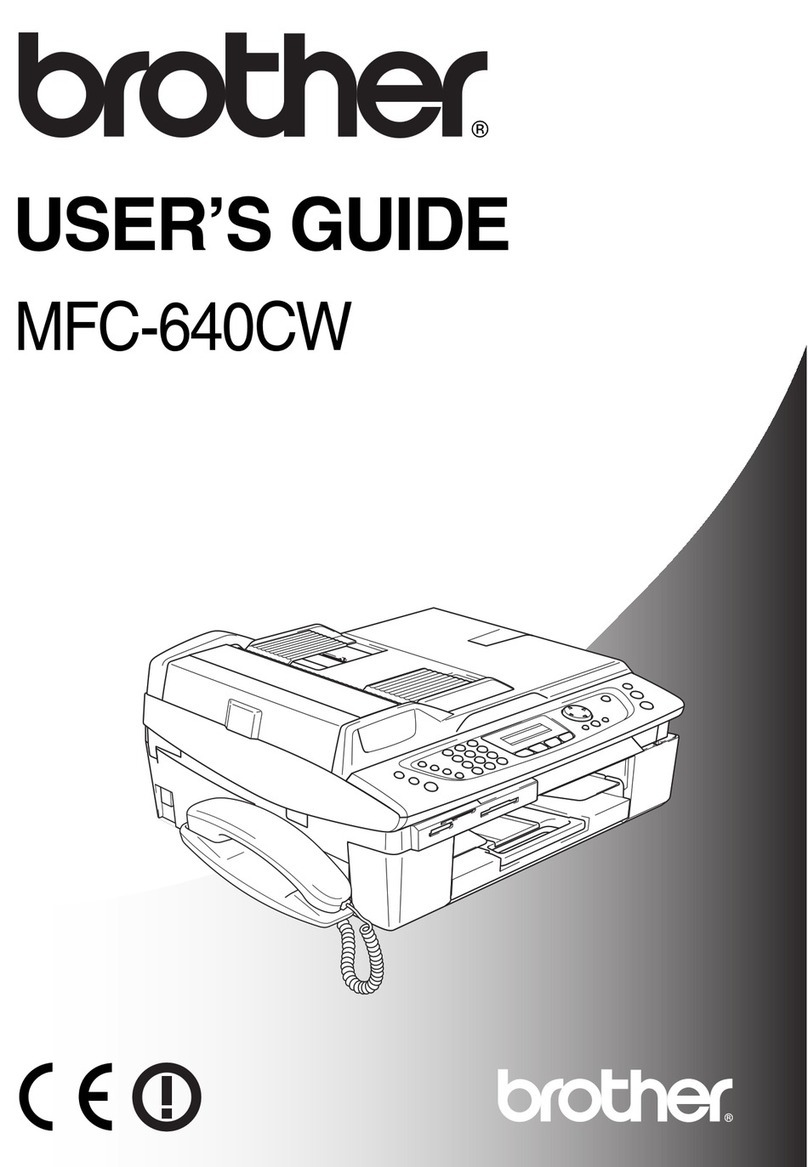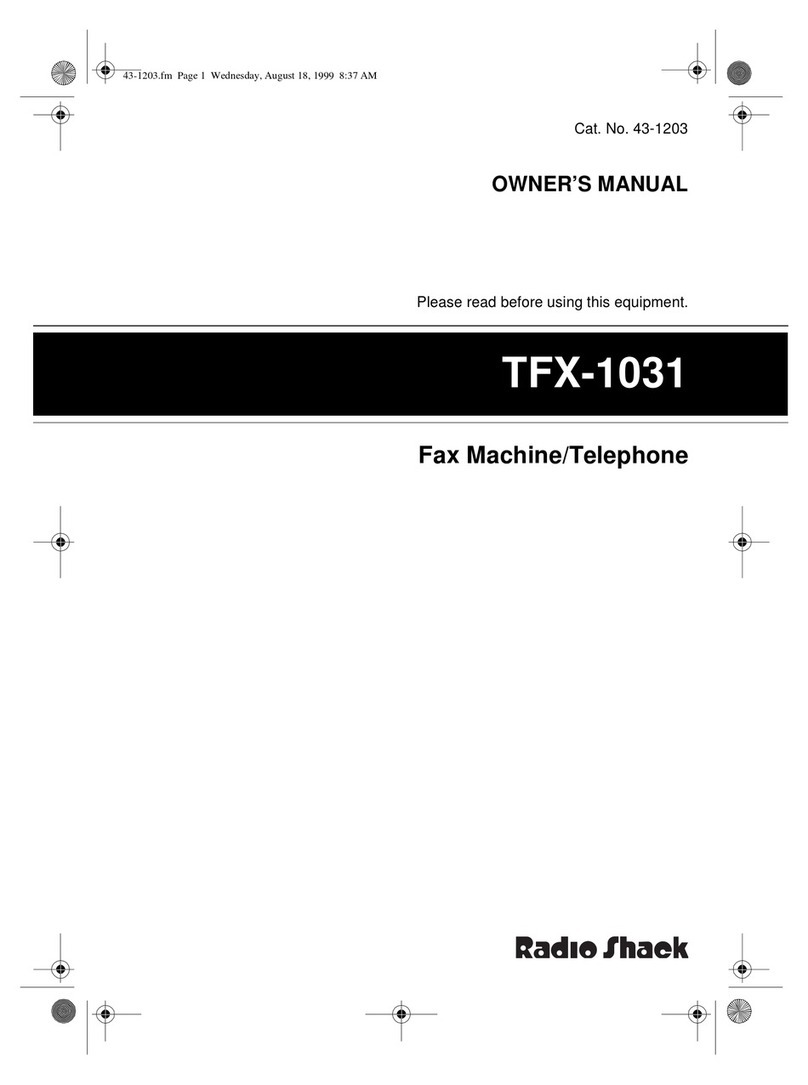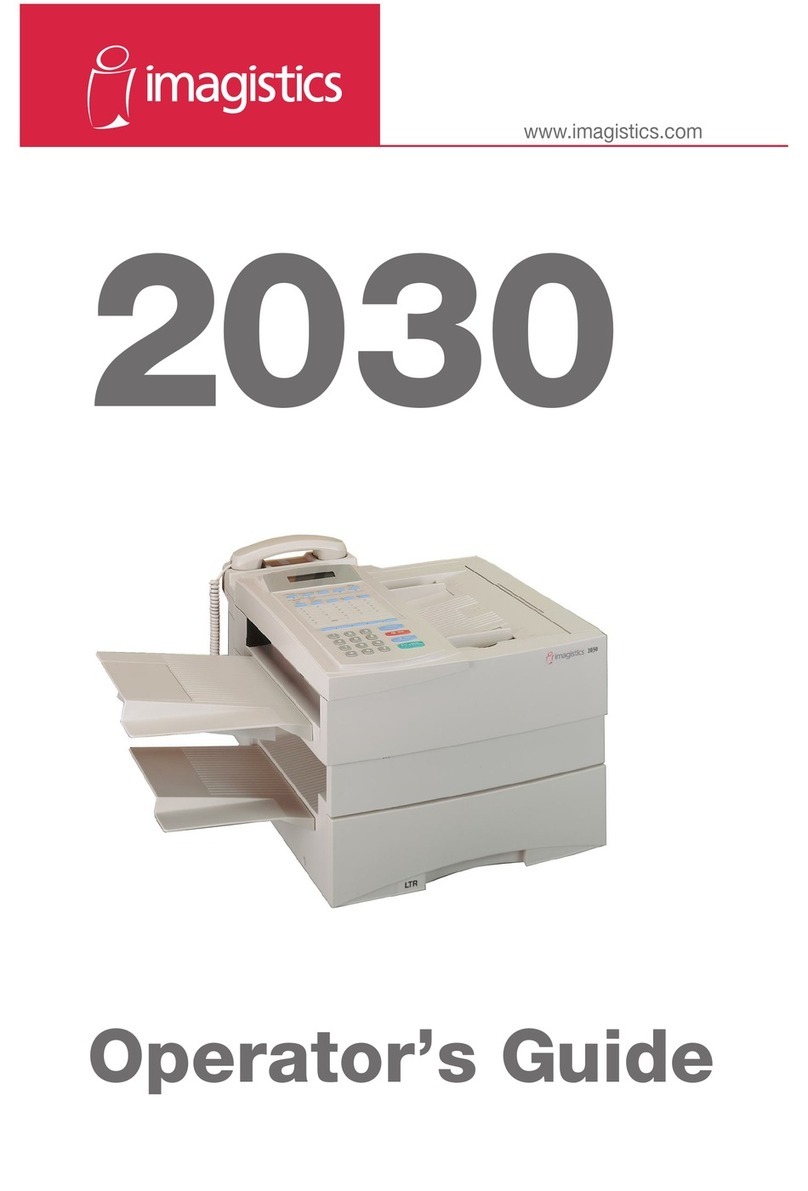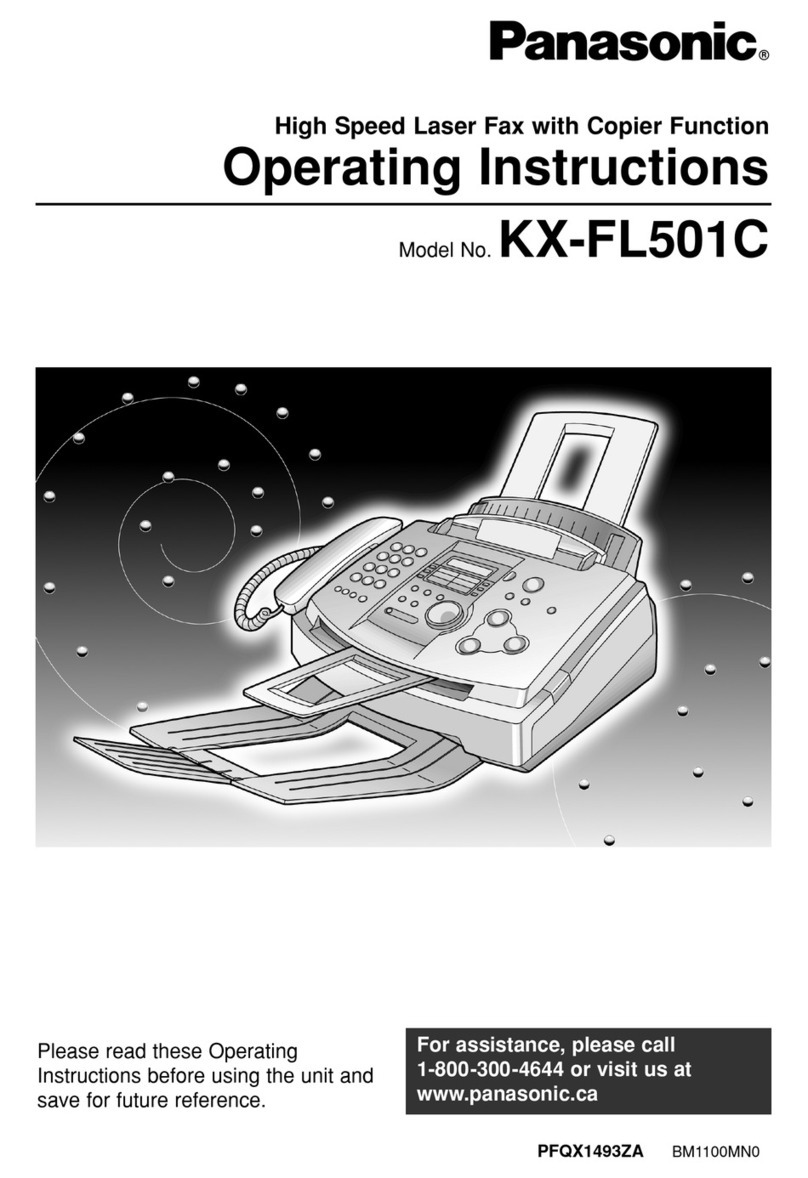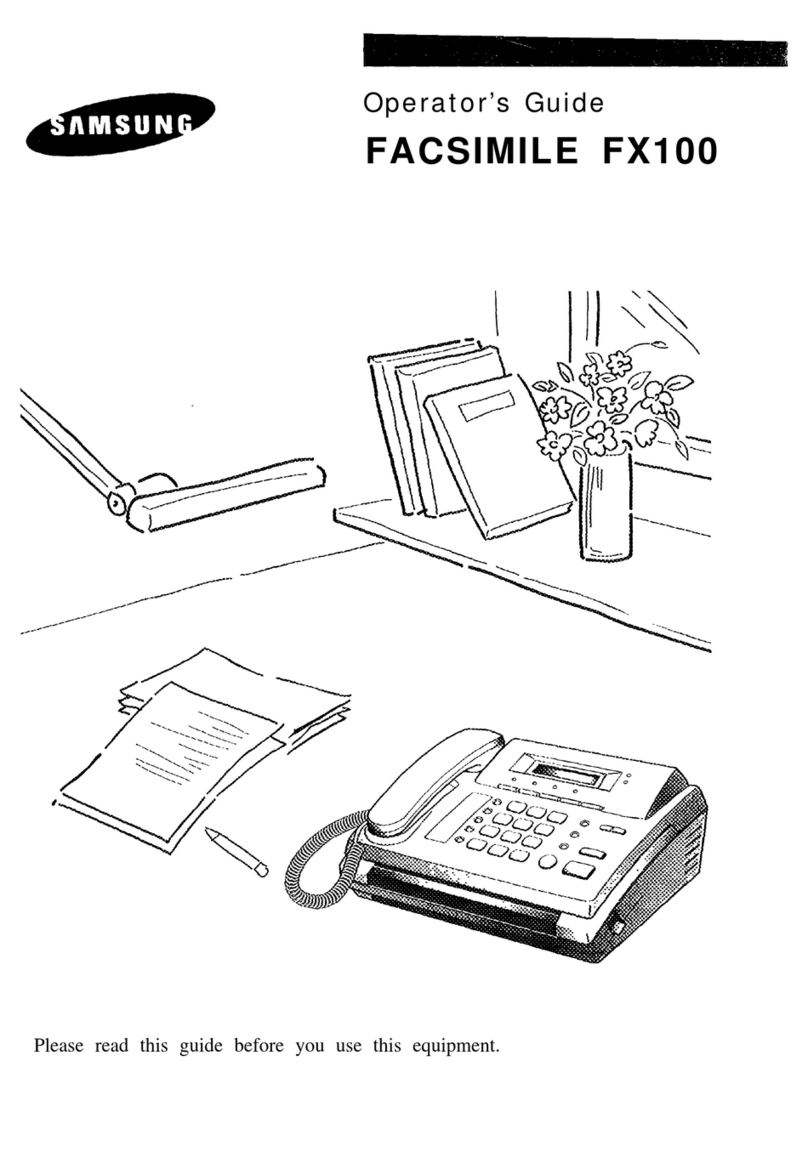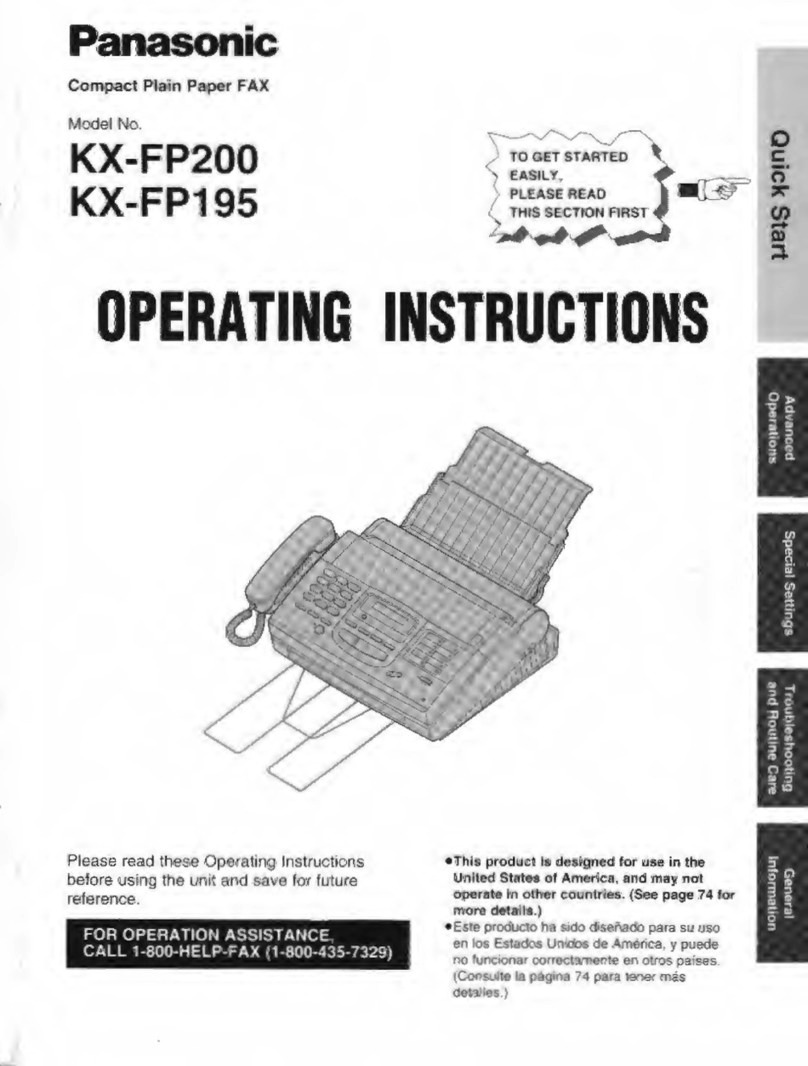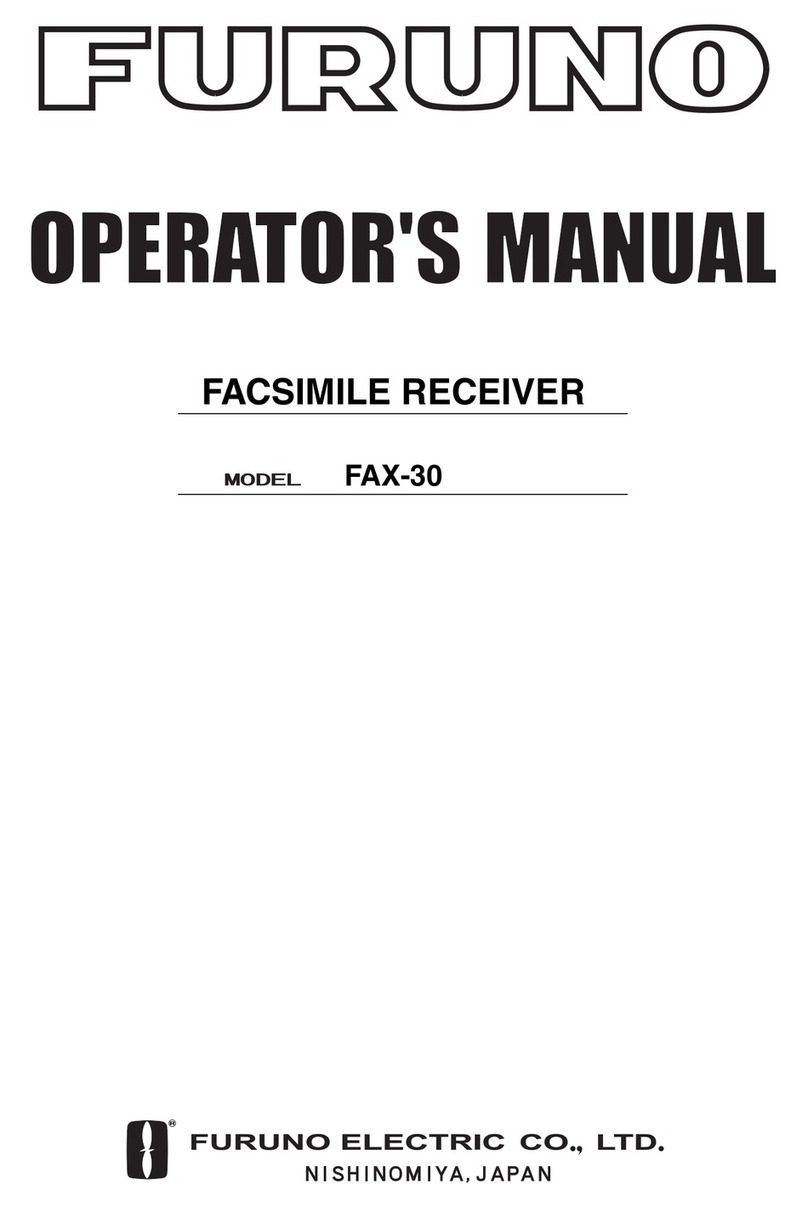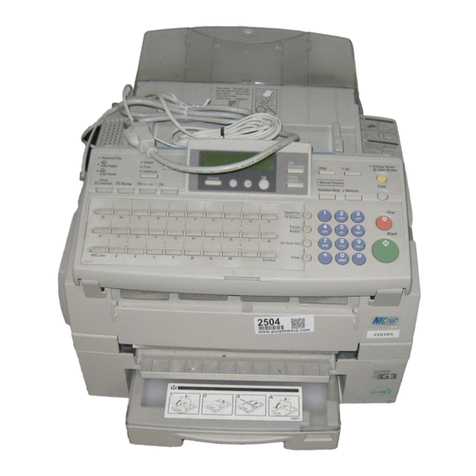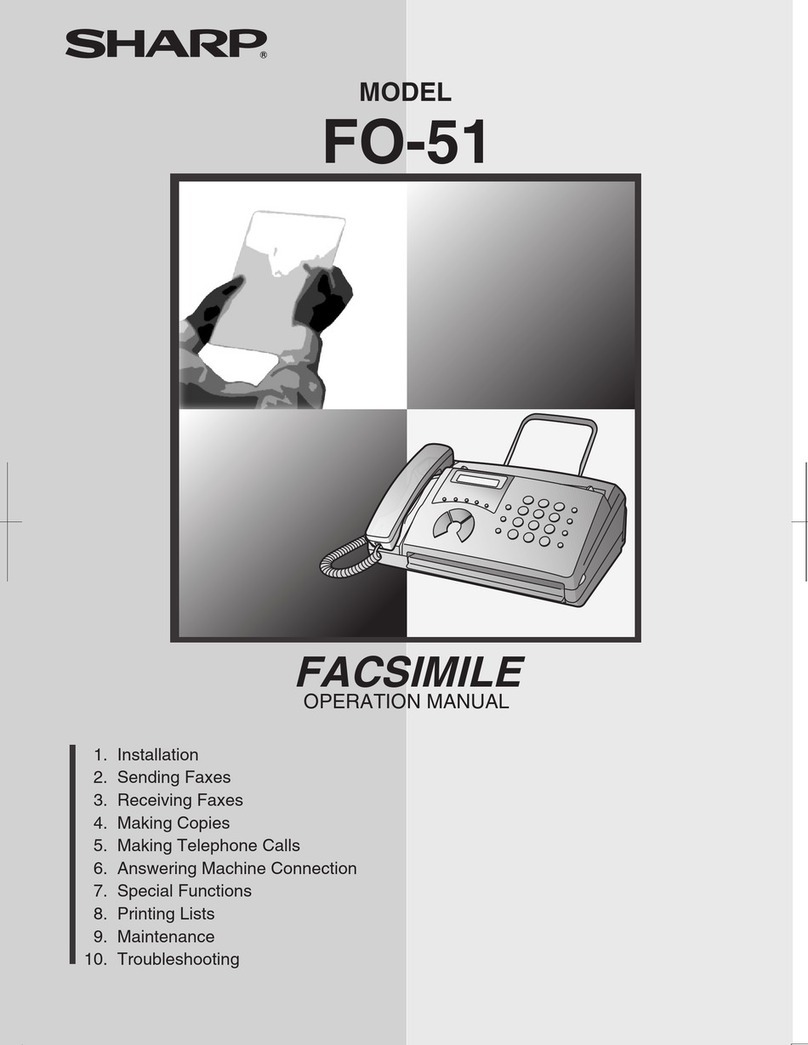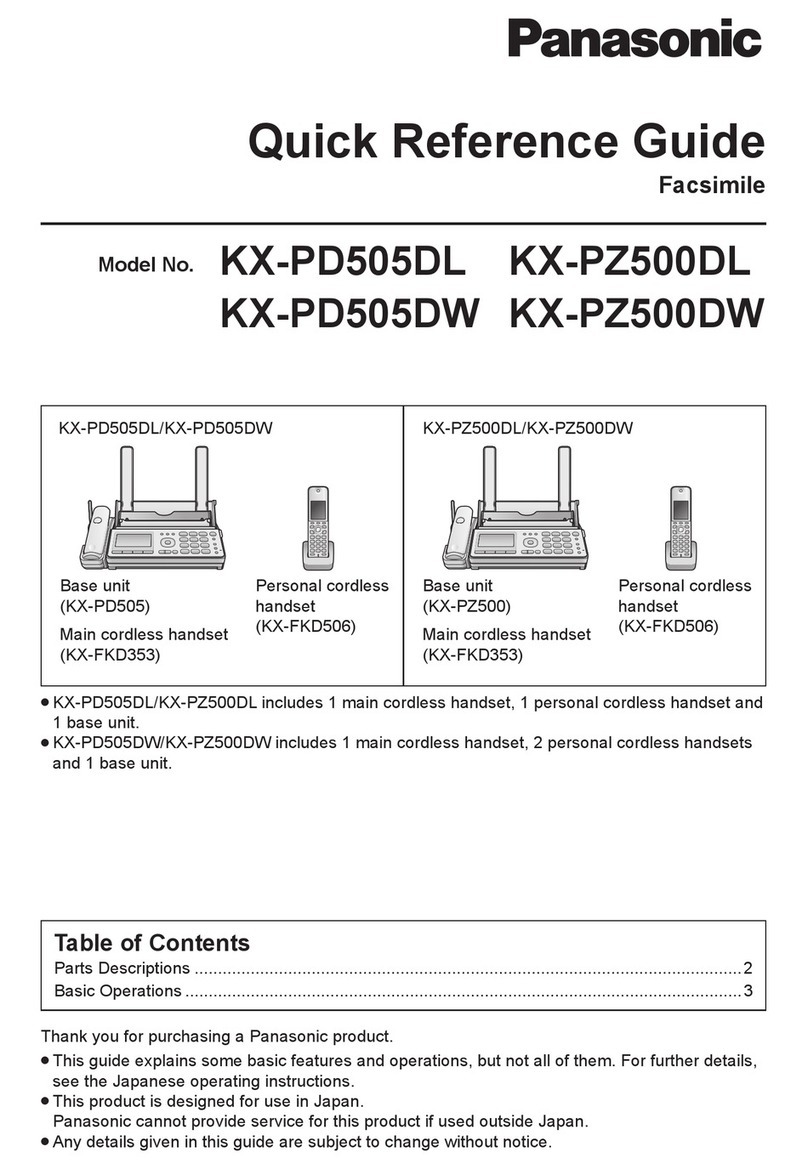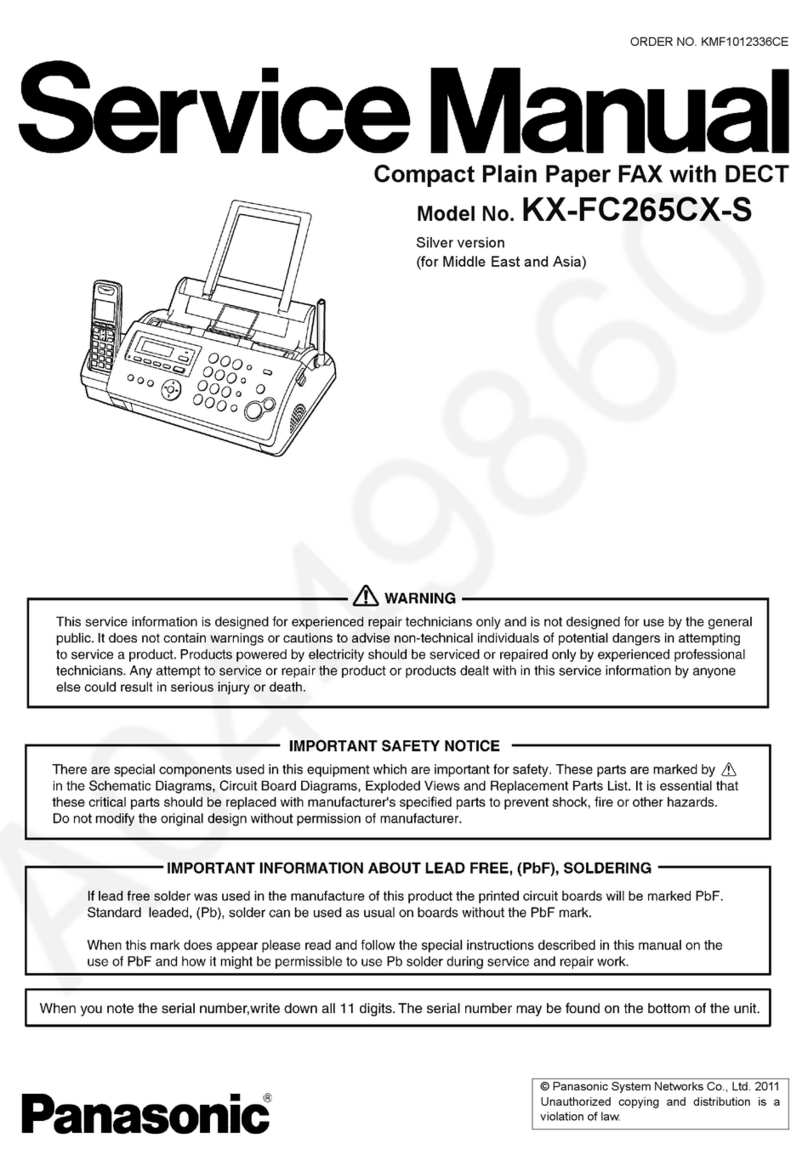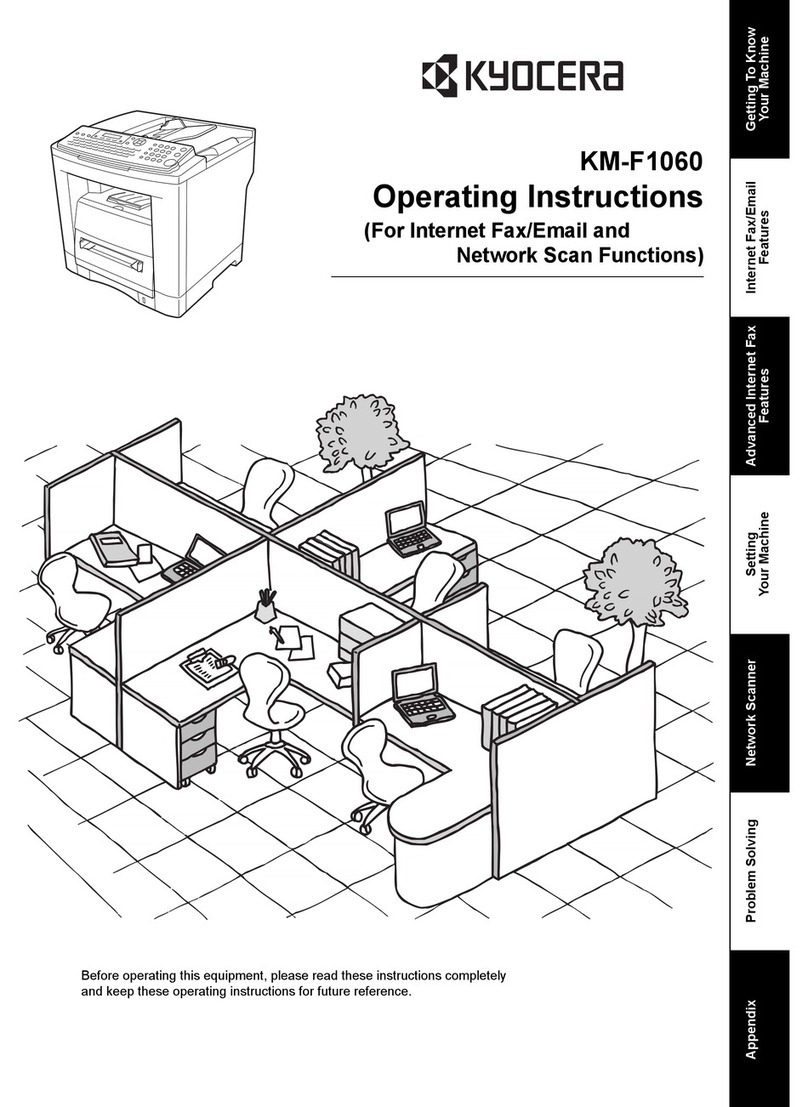
Users in the U.S.A.
x
Users in the U.S.A.
Pre-installation requirements for Canon facsimile equipment
A. Location
Supply a suitable table, cabinet, or desk. See the Appendix for the machine’s dimensions and weight.
B. Order information
1. Only a single line, touch-tone or rotary telephone set is to be used.
2. Order an RJ11-C modular jack (USOC code), which should be installed by the telephone company. If the RJ11-C jack is
not present, installation cannot occur.
3. Order a normal business line from your telephone company’s business representative. The line should be a regular
voice grade line or the equivalent. Use one line per machine.
DDD (DIRECT DISTANCE DIAL) LINE
-or-
IDDD (INTERNATIONAL DIRECT DISTANCE DIAL) LINE IF YOU COMMUNICATE OVERSEAS
NOTE
Canon recommends an individual line following industry standards, e.g., the 2500 (Touch Tone) or 500 (Rotary/Pulse Dial) telephones. A
dedicated extension off a PBX machine without “Call Waiting” can be used with your FAXPHONE L170. Key telephone systems are not
recommended because they send non-standard signals to individual telephones for ringing and special codes, which may cause a fax
error.
C. Power requirements
This equipment should be connected to a standard 120-volt AC, three-wire grounded outlet only. Do not connect this
machine to an outlet or power line shared with other appliances that cause “electrical noise.” Air conditioners, electric
typewriters, copiers, and machines of this sort generate electrical noise which often interferes with communications
equipment and the sending and receiving of documents.
Connection of the equipment
This equipment complies with Part 68 of the FCC rules and the requirements adopted by the ACTA. On the rear panel of
this equipment is a label that contains, among other information, a product identifier in the format US:AAAEQ##TXXXX. If
requested, this number must be provided to the telephone company.
An FCC compliant telephone cord and modular jack are provided with this equipment. This equipment is designed to be
connected to the telephone network or premises wiring using a compatible modular jack which is Part 68 compliant. See
Installation instructions for details.
The Ringer Equivalence Number (REN) is used to determine the number of devices that may be connected to a telephone
line. Excessive RENs on a telephone line may result in the devices not ringing in response to an incoming call. In most but
not all areas, the sum of RENs should not exceed five (5.0). To be certain of the number of devices that may be connected
to a line, as determined by the total RENs, contact the local telephone company. The REN for this product is part of the
product identifier that has the format US:AAAEQ##TXXXX. The digits represented by ## are the REN without a decimal
point (e.g., 10 is a REN of 1.0).
This equipment may not be used on coin service provided by the telephone company.
This equipment if it uses a telephone receiver is hearing aid compatible.
Connection to party lines is subjected to state tariffs.
l-1100.book Page x Friday, February 27, 2004 7:04 PM


